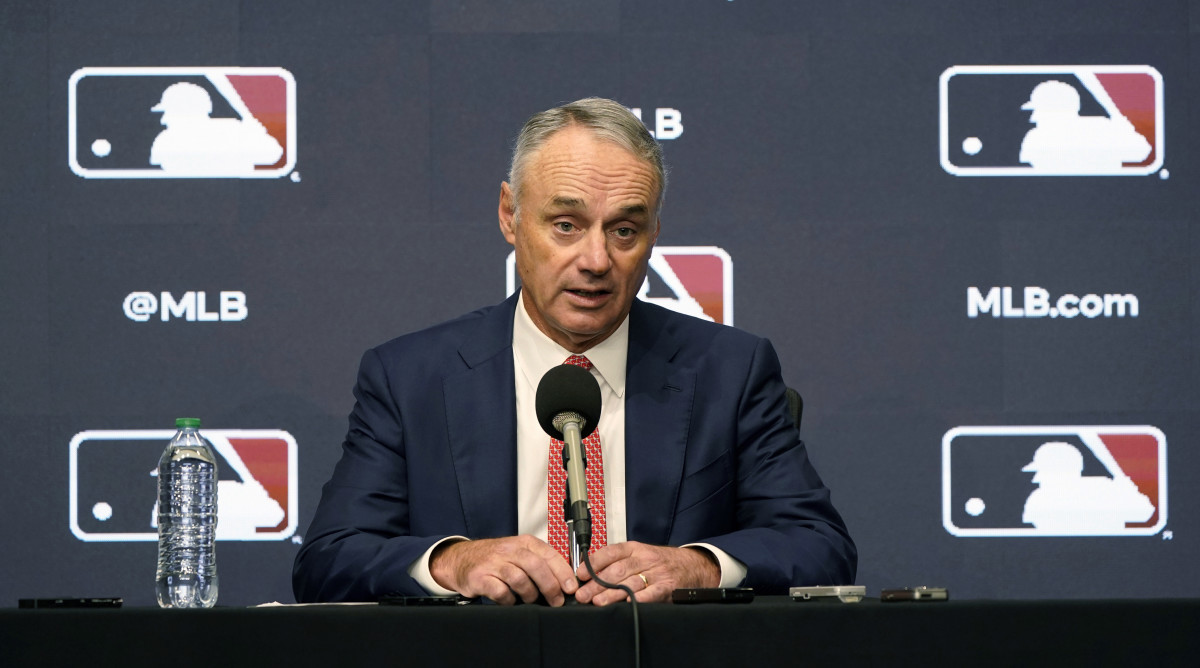‘Well, What Did You Expect?’ MLB, MLBPA Finally Met. Not Much Happened
In the minutes after the first substantive conversation between Major League Baseball and the Major League Baseball Players Association in 43 days, some two dozen players gathered on Zoom to discuss the proposal they had just heard. Sometimes such caucuses can devolve into swearing, screaming sessions. But this one was more relaxed, according to a person familiar with it. The players were not excited about the league’s latest offer. But they were not furious, either. A second person characterized their reaction as “disappointed,” a third as “frustrated.”
“Eventually we get to the point of somebody saying, ‘Well, what did you expect?’” one person said over text message.

As baseball’s lockout drags into its second month, Thursday’s bargaining session provided the first hope that the sides might come to a resolution that starts the season on time. But perhaps not much of one.
The league did not broach any of the most contentious topics, such as changes to the competitive balance tax (more commonly known as the luxury tax), to revenue sharing or to free agency. Thursday’s proposal dealt more with raising the major league minimum salary to $600,000, and eventually $700,000, from 2021’s $570,500, as well as adjustments to the draft. (Given the current rate of inflation, according to another person familiar with the players’ thinking, the union did not feel that was enough movement on the minimum salary, but the draft proposal was an improvement.) An MLB spokesperson did not return a request for comment. An MLBPA spokesperson declined to comment.
“I think too many people thought today there’d be some kind of an agreement,” said the person. “Today represents the start of things.”
Even that is a thawing. The sides have not met in person since Dec. 1. After three days of contentious conversations in Irving, Texas, the league locked out the players as the old CBA expired. In a press conference the next day, commissioner Rob Manfred insisted, “We [imposed a lockout] out of a desire to drive the process forward to an agreement now,” but the league did not even schedule another bargaining session for nearly three weeks. That one was of such little consequence that the top negotiators for each side, Dan Halem for the league and Bruce Meyer for the MLBPA, did not even attend.
But the calendar has begun to exert pressure. The general feeling is that pitchers need three weeks to be ready for the season, and spring training cannot be organized in a matter of hours. Many free agents remain unsigned. Many players will require visas to return to the United States. And someone will need to draw up a whole new set of COVID protocols. Even if the sides made a deal tomorrow, it would be hard for pitchers and catchers to report when they are scheduled to, about a month from now.
The sides remain far apart on many key issues. Put simply, the owners want to redistribute the money that goes to players; the players want to expand that pool of money. The owners were largely happy with the CBA that expired in December; the players want wholesale change but do not have much to give. So fans continue to wait. The next step will be for the union to respond to Thursday’s proposal. According to two people familiar with the plans, no next session has been scheduled.
More MLB Coverage:
• Jon Lester’s Epic Baseball Story Comes to an End
• Hall of Fame Tracker Is Improving the Cooperstown Conversation
• Solidarity and Betrayal: Inside Baseball’s First Major Labor War
• MLB Players Can’t Stay Silent Anymore During Lockout
